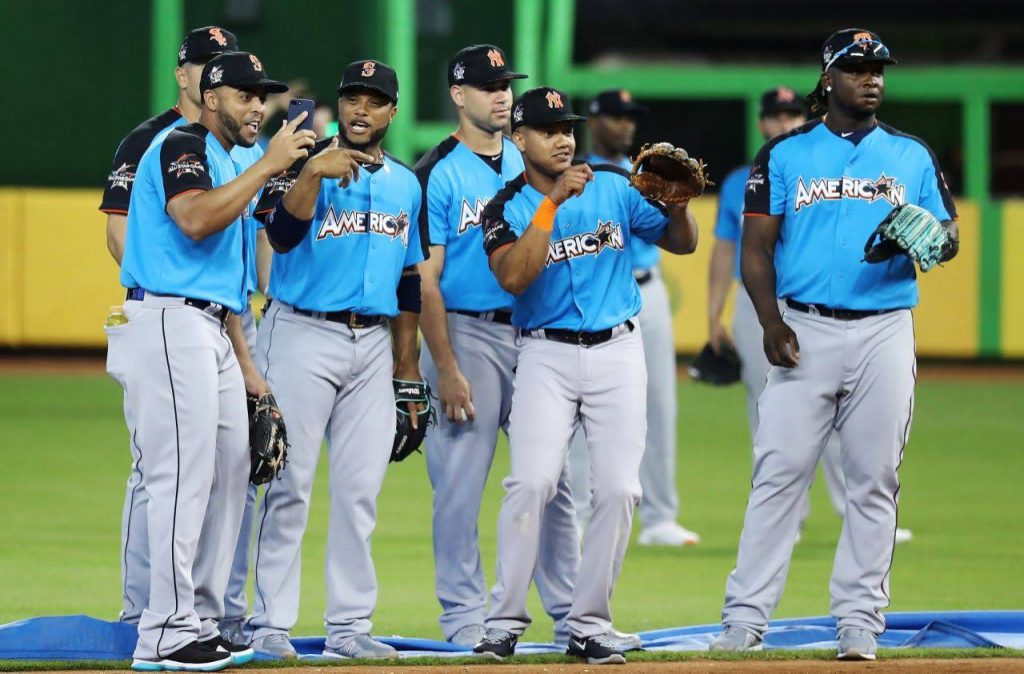It’s that time of year again.
The 2018 MLB All-Star rosters have been revealed and boy, do we have a lot to talk about. It’s clear that the player selection process is a popularity vote rather than an endorsement for a successful first half. The fact that Blake Snell (12-4, 2.09 ERA, 1.03 WHIP), Nicholas Castellanos (.306, 15 HR, 56 RBI, .882 OPS), Jesus Aguilar (.302, 23 HR, 64 RBI, 1.000 OPS) were not originally All-Stars is terrible. These players are among many others who face the same issue each year, and it’s doing more harm for the game than good. On a bigger scale, if MLB wants to continue its trend of raising viewership numbers, they need to do away with some old habits; the All-Star game is no exception. Some have many ways to fix the player selection, and here is my take:
Things To Keep
There are certain aspects of the All-Star game and its process that are beneficial to the integrity of baseball as well as the attractiveness of current fans. These aspects should be kept without a doubt.
- Uniforms during the actual All-Star game will be every player’s respective uniform. It should follow the home and away color code.
- Each team will send at least one representative to the All-Star game. I had a lot of time to think about this, and at first I was against it. Why should someone on a really bad team make the All-Star game over someone who actually deserves it? However, this keeps fans engaged, even when their team is not doing so well. Also, it keeps bigger market teams from overpopulating the roster versus smaller market teams. We’re keeping it.
- Both the NL and AL teams will implement the DH regardless of venue.
- Managers will make starting lineups.
Things To Change
Here is where things could get a little weird at first but have an open mind.
Basically, the All-Star game format will change into four teams total, two teams for each league (Team A and Team B for NL and AL).
Team A and Team B in each league will play each other on the first day. Then, the winning teams will represent their respective league in the final game the next day. This is a similar process to how the NHL bases their All-Star game. However, since MLB has six divisions instead of four like the NHL, it would get complicated.
Fans will vote for four player captains, two for NL and two for AL.
All captains cannot be from the same Major League teams. Fans will also vote for players into a pool for team captains (with their manager) to pick in a draft style player selection process.
The preliminary games will be six innings long, the final game will be nine.
This ensures a few things such as roster size, reducing game times and reducing the chance of injury among other aspects. Having four teams instead of the usual two would mean that there would be twice as many all-star players as before, which doesn’t make sense.
Roster sizes for the preliminary games are 20 players (eight position players, five bench, three starters, four relievers). The captain of each winning team chooses five players (two position, three pitchers) from the losing team to take them to the final game, thus making a 25 man roster.
Each team will have a manager, as always. But instead of from the recent World Series, they will be from the year’s past championship series.
This still gives us two managers from the World Series and two more managers for the third and fourth teams.
Finally, the fight for home-field advantage in the World Series is coming back.
The All-Star game is so much better when there is actually something to fight for.
Wrapping up, this whole thing isn’t perfect. There will be flaws in this and all criticisms are accepted, but we can all agree that something has to be done in order to avoid major snubs every single year while keeping fans of the game engaged.
